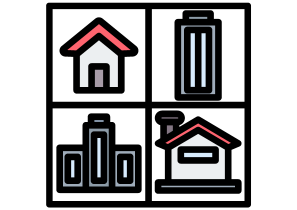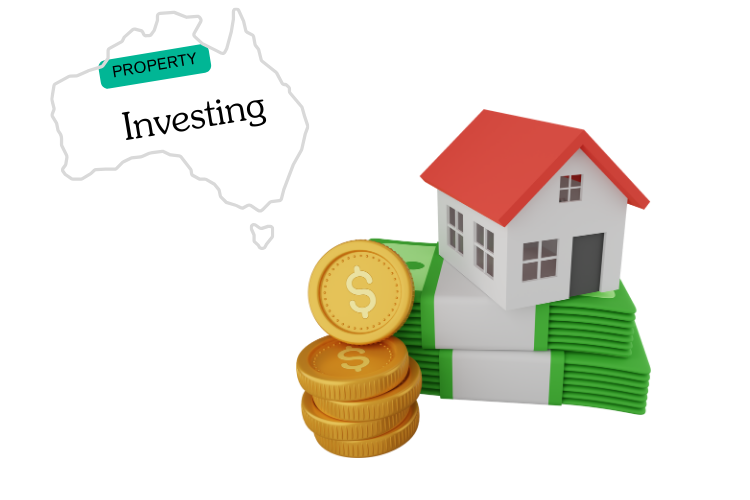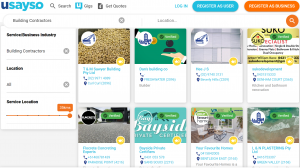Are you considering investing in real estate in Australia? Have you worked out the best way to accumulate wealth, and real estate investment is part of your strategy. Well, look no further! This comprehensive guide is your ultimate resource for navigating the ins and outs of the Australian property market. From understanding the current trends to uncovering the finest investment opportunities, we’ve got you covered.
Australia’s real estate market offers an array of options for both seasoned investors and first-time buyers. Whether you’re interested in residential properties, commercial spaces, or even rural land, this guide will equip you with the knowledge you need to make informed decisions. We’ll explore the major cities and regional areas, highlighting their unique attractions and investment potential.
With expert insights and practical tips, we’ll delve into the intricacies of financing your investment, exploring various loan options and highlighting the factors that can impact your borrowing capacity. Additionally, we’ll provide guidance on navigating legal and tax considerations, ensuring your investment is compliant and optimised for profitability.
Investing in real estate can be a lucrative venture when approached with careful planning and informed decision-making. Join us as we demystify the world of Australian real estate and empower you to make wise and lucrative investments.
Drivers of a Resilient Property Market in Australia
Despite 13 interest rate increases by the Reserve Bank of Australia, property prices have not only ceased falling but have been rising since early 2023. Several factors contribute to this growth:
- Strong Migration: An influx of people is driving demand.
- Lower Listing Volumes: Fewer properties available for sale are pushing up prices.
- Inflation and Interest Rates: Inflation has peaked, and interest rates are likely stabilizing.
- Consumer Confidence: As confidence returns, markets are expected to continue their upward trend.
- Fragmented Markets: Different states exhibit varying trends.
- Rental Crisis: Unfortunately, there’s no relief in sight; rents continue to soar.
Source: propertyupdate.com.au
Benefits of Investing in Real Estate

Investing in real estate offers a multitude of benefits that make it an attractive option for both seasoned investors and first-time buyers. One of the primary advantages is the potential for long-term capital growth. Over the years, Australia’s property market has consistently demonstrated a steady increase in value, making real estate investments a reliable wealth-building strategy.
In addition to capital growth, real estate investments also generate passive income through rental returns. Australia’s strong rental market provides ample opportunities for investors to earn a regular stream of income. Whether you choose to invest in residential properties, commercial spaces, or even rural land, there’s always a demand for rental properties, ensuring a steady cash flow.
Moreover, investing in real estate allows for greater control over your investment compared to other asset classes. Unlike stocks or bonds, where you have no control over the performance of the underlying asset, real estate investments provide you with the ability to make improvements and increase the value of your property. This control empowers you to optimise your investment and potentially achieve higher returns.
Types of Real Estate Investments in Australia

Australia’s real estate market offers a wide range of investment options to suit various preferences and budgets. The most common types of real estate investments include residential properties, commercial properties, and rural land.
Residential properties are the most popular choice among investors. These can range from apartments and townhouses to single-family homes and luxury properties. Residential properties offer opportunities for both capital growth and rental income, making them a versatile investment option.
Commercial properties, on the other hand, cater to businesses and can include office buildings, retail spaces, warehouses, and industrial properties. Investing in commercial real estate can be highly lucrative, with the potential for higher rental yields and longer lease terms.
For those seeking a unique investment opportunity, rural land presents an alternative option. Australia’s vast landscapes offer opportunities for agricultural ventures, eco-tourism, and even lifestyle blocks. Investing in rural land can provide a retreat from urban life while still offering the potential for financial gains.
Factors to Consider Before Investing in Real Estate
Before diving into the Australian real estate market, it’s crucial to consider a few key factors to ensure a successful investment. One of the primary considerations is location. Australia is a geographically diverse country, and each region offers different investment potential. Understanding the local market dynamics, growth prospects, and rental demand is essential in selecting the right location for your investment.
Another crucial factor to consider is your investment goals and risk tolerance. Real estate investments can vary in terms of risk and return potential. Some investors may prefer a conservative approach, focusing on stable rental income and long-term capital appreciation. Others may be more inclined towards higher-risk, high-reward opportunities. Clarifying your investment objectives will help guide your decision-making process.
Additionally, it’s important to conduct thorough due diligence on any potential investment. This includes researching property prices, vacancy rates, rental yields, and any planned developments in the area. Engaging the services of a qualified real estate agent or property consultant can provide valuable insights and assist in making informed investment decisions.
Understanding the Australian Real Estate Market
Australia’s real estate market is influenced by various factors, including economic conditions, population growth, and government policies. Understanding these dynamics is crucial for investors looking to capitalise on the market’s potential.
One of the key drivers of the Australian property market is population growth. Australia has experienced consistent population growth, driven by factors such as immigration and natural population increase. This growth has led to increased demand for housing, resulting in upward pressure on property prices.
Economic conditions also play a significant role in the real estate market. Factors such as employment rates, interest rates, and consumer confidence can impact property prices and rental demand. Keeping abreast of economic indicators and market trends can help investors make informed decisions and identify opportunities.
Government policies, including taxation and regulations, also influence the real estate market. These policies can impact property investors in areas such as rental income taxation, capital gains tax, and foreign investment regulations. Staying informed about these policies ensures compliance and maximises the profitability of your investment.
Steps to Buying a Property in Australia
in Australia involves several steps that need to be followed to ensure a smooth and successful transaction. The first step is to determine your budget and obtain pre-approval for a loan, if necessary. This will give you a clear understanding of your borrowing capacity and enable you to focus your property search accordingly.
Next, it’s important to engage the services of a qualified real estate agent or buyer’s agent who specialises in the local area you are interested in. These professionals have extensive knowledge of the market and can assist in finding suitable properties, negotiating prices, and managing the buying process.
Once you’ve found a property that meets your criteria, it’s time to conduct due diligence. This may involve obtaining building and pest inspections, reviewing strata reports (if applicable), and conducting a thorough title search. These steps ensure that you are fully aware of any potential issues with the property before proceeding with the purchase.
Once due diligence is complete, it’s time to make an offer or bid at auction, depending on the method of sale. If your offer is accepted or you are the successful bidder, the next step is to engage a conveyancer or solicitor to handle the legal aspects of the transaction. They will conduct title searches, prepare legal documents, and ensure a smooth transfer of ownership.
Finally, settlement takes place, and the property officially becomes yours. It’s important to arrange insurance coverage for the property and notify relevant authorities and service providers of the change in ownership.
Financing Options for Real Estate Investments
Financing is a crucial aspect of real estate investments, and understanding the various options available is essential for investors. In Australia, there are several financing options, including traditional mortgages, interest-only loans, and self-managed superannuation fund (SMSF) loans.
Traditional mortgages are the most common form of financing for real estate investments. These loans typically require a deposit of at least 20% of the property’s purchase price and are repaid over a set term, usually 25 to 30 years. Interest rates can be fixed or variable, depending on your preference.
Interest-only loans are another option, particularly for investors looking to maximise cash flow. With an interest-only loan, you only pay the interest portion of the loan, rather than the principal. This reduces your monthly repayments but means that the principal amount remains unchanged.
For investors looking to utilise their self-managed superannuation fund (SMSF) to invest in real estate, SMSF loans are available. These loans have specific requirements and regulations, so it’s important to seek advice from a qualified financial advisor or mortgage broker to ensure compliance.
Property Management Considerations for Investors
Once you’ve acquired an investment property, effective property management is crucial to maximise returns and minimise hassle. Engaging the services of a professional property manager can simplify the process and ensure your investment is well-maintained and profitable.
A property manager will handle tasks such as finding and screening tenants, collecting rent, conducting inspections, and managing maintenance and repairs. They have the expertise and resources to attract high-quality tenants and resolve any issues that may arise during the tenancy.
It’s important to establish clear communication and expectations with your property manager from the beginning. Regular updates and reports on rental income, expenses, and property condition will help you stay informed and make informed decisions about your investment.
Risks and Challenges of Investing in Australian Real Estate

While investing in Australian real estate can be highly profitable, it’s essential to be aware of the risks and challenges involved. One of the primary risks is market volatility. Property prices can fluctuate, and economic downturns can impact rental demand and property values. It’s crucial to take a long-term approach and be prepared for potential market fluctuations.
Another challenge is the potential for property market oversupply. In certain areas, an excess of new developments can lead to increased competition and downward pressure on rental yields and property values. Conducting thorough market research and selecting locations with strong growth potential can mitigate this risk.
Additionally, changes in government policies and regulations can impact investors. For example, changes to taxation laws or restrictions on foreign investment can affect rental income and capital gains. Staying informed about potential policy changes and seeking professional advice can help navigate these challenges.
How Long to Hold Property for a Good Return in the Property Cycle
When it comes to holding property for a good return in the property cycle in Australia, it’s generally recommended to take a long-term approach. Real estate investments tend to perform better over an extended period, allowing you to ride out market fluctuations and benefit from capital growth. Holding property for at least 7 to 10 years can provide a more stable return and potentially maximise profitability. However, it’s important to conduct thorough research on market trends and consult with real estate professionals to determine the optimal holding period based on your investment goals.
Conclusion and Final Thoughts
Investing in real estate in Australia offers a world of opportunities for those seeking long-term wealth creation and financial security. With its diverse range of investment options and robust property market, Australia remains an attractive destination for both local and international investors.
By understanding the benefits of real estate investments, the different types of properties available, and the factors to consider before investing, you can make informed decisions that align with your investment goals. Navigating the Australian real estate market requires thorough research, due diligence, and a clear understanding of the local dynamics.
Financing your investment appropriately and engaging professional property management services can optimise your returns and reduce the stress associated with property ownership. While there are risks and challenges involved, a well-planned and carefully executed real estate investment can provide significant rewards.
So, whether you’re a seasoned investor or a first-time buyer, take advantage of Australia’s thriving real estate market and embark on your journey to financial success. With the insights and guidance provided in this guide, you’ll be well-equipped to make wise and lucrative investments in the Australian property market.











































